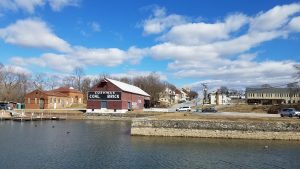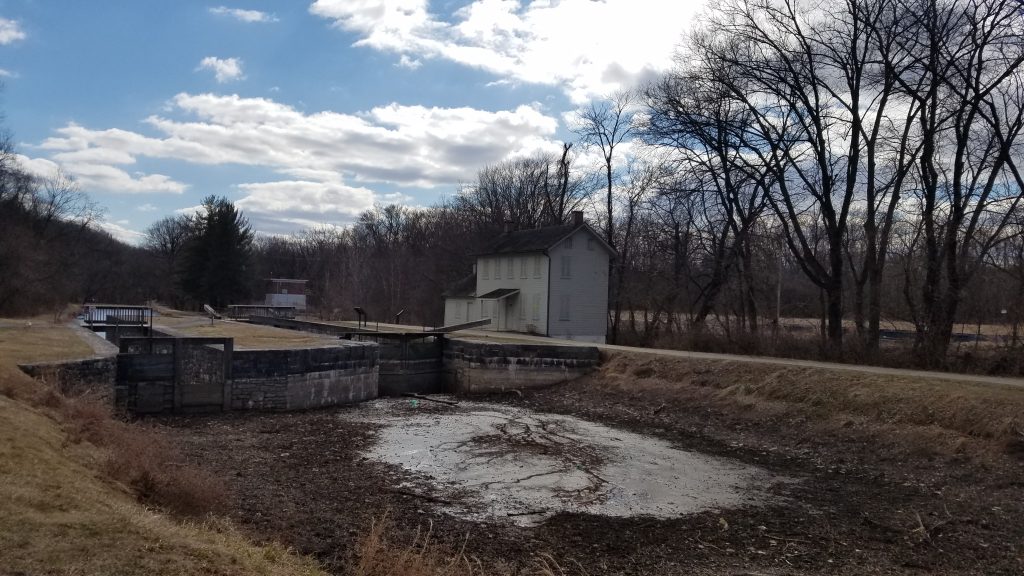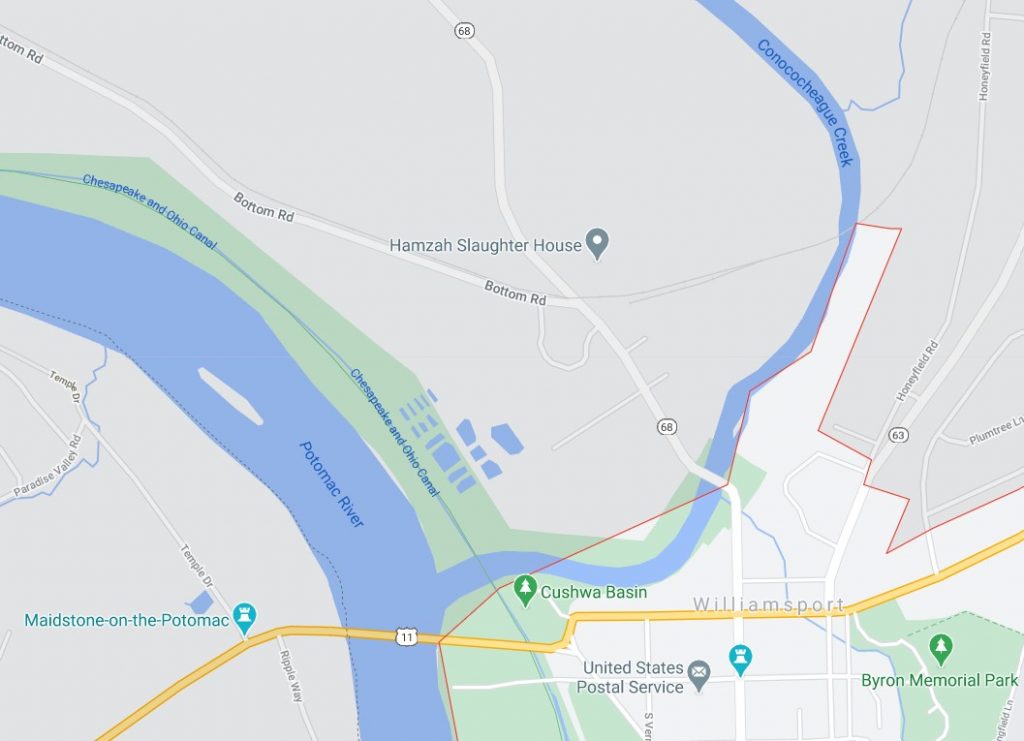ECW Weekender: Williamsport, Maryland (Part 1)

A few weekends ago I took a Saturday drive to Williamsport, West Virginia and Maryland. The Maryland side of the river has lots of marked historical sites to explore. Part of my time in the area was spent along the Potomac River and the C&O Canal, really looking at the waterways and getting a better understanding of the Civil War history that happened there.
During the 1862 Maryland Campaign, Confederate General “Stonewall” Jackson decided to cross the Potomac at Williamsport to threaten Martinsburg. However, this decision delayed his capture of Harpers Ferry—his objective at the time—and hampered some of Lee’s other plans for the Army of Northern Virginia. At the end of the same campaign, Confederate cavalry skirmished at Williamsport in a deceptive ruse, allowing the Confederate army more time to reorganize after crossing near Shepherdstown.
Again in 1863, Williamsport saw military action. At the end of the Pennsylvania Campaign and after the Battle of Gettysburg, the Confederates crossed the river at Williamsport and fought around the town and surrounding area. Thousands of wounded passed though the streets in the seventeen mile long ambulance train and some of the injured were left behind in the town.
Standing near the Williamsport visitor center for the Chesapeake & Ohio Canal National Historic Park, different battle and campaign accounts started to make sense. I’d never really been able to mentally sort out the different bodies of water around Williamsport that affected military movements or became objects of destruction by just reading about it in a book.

There’s the Potomac River. Parallel to the river is the C&O Canal. Then, there’s the Conococheague Creek which joins the river perpendicularly. To cross the Conococheague Creek, the C&O Canal flows through an aqueduct.
Here’s a map and some photos to help!
In the past, I hadn’t been able to figure out the aqueduct and how/where/why it it crossed the creek. Seeing the reconstructed channel and recognizing its vital role for transportation along the canal was really helpful and explained why both sides targeted it. First Union cavalry tore at the aqueduct in an attempt to prevent the Confederates from recrossing the Potomac here in 1862 during the Maryland Campaign. The Confederates destroyed more the following year as they retreated after Gettysburg, tearing out all the corners of the aqueduct, burning canal gates, and destroying parts of Lock 44 which is about 900 yards down the canal from the aqueduct. They also punched four passages through the canal itself to facilitate troop movement to the river and fords.

Although the NPS Visitor Center was closed due to Covid-19 restrictions at the time of my visit, there are nice interpretive panels around the area to explain the features and the views. I enjoyed walking on the pathway along the canal and exploring the rebuilt and restored aqueduct. Finally, these military actions along the Potomac at Williamsburg and around the canal and bridged channel were starting to make sense!
If you have time and feel like a walk, the towpath trail along the canal extends to Lock 44, or you can drive and view it from the parking area.

I enjoyed taking the time to understand the lay of the land and water at Williamsport and get a deeper understanding of the Civil War maneuvers and destruction that happened at this location.
Part 2 will feature Doubleday Hill…stay tuned!



Very cool. Thanks for this. I grew up on the towpath of the C&O, or I @ least learned to love hiking there as a kid. Though I explored the canals, I hadn’t developed a passion for civil war history yet, so I knew nothing about this except the terrain until now. Awesome- thanks again
I believe that a Maryland Historical Society is studying the feasibility of a park to interpret the Falling Waters area. I believe the project is in very early phases. Not being from the area, I do not know the geographical relationship between Williamsport and Falling Waters.
I have always enjoyed walking along the C&O on the occasions when I have been in that area on tours. It helps to have an informed guide explaining what you are seeing because, as you say, it is visually confusing. Thanks for a nice spring post.
First visited Williamsport in 2017 and was impressed with all the history that has occurred in this town. Thank you for sharing the post and photos.
Thanks so much for this info, Sarah! Rode the C&O and drove through Williamsport in the past, but this brings these items into focus. Really appreciate it.